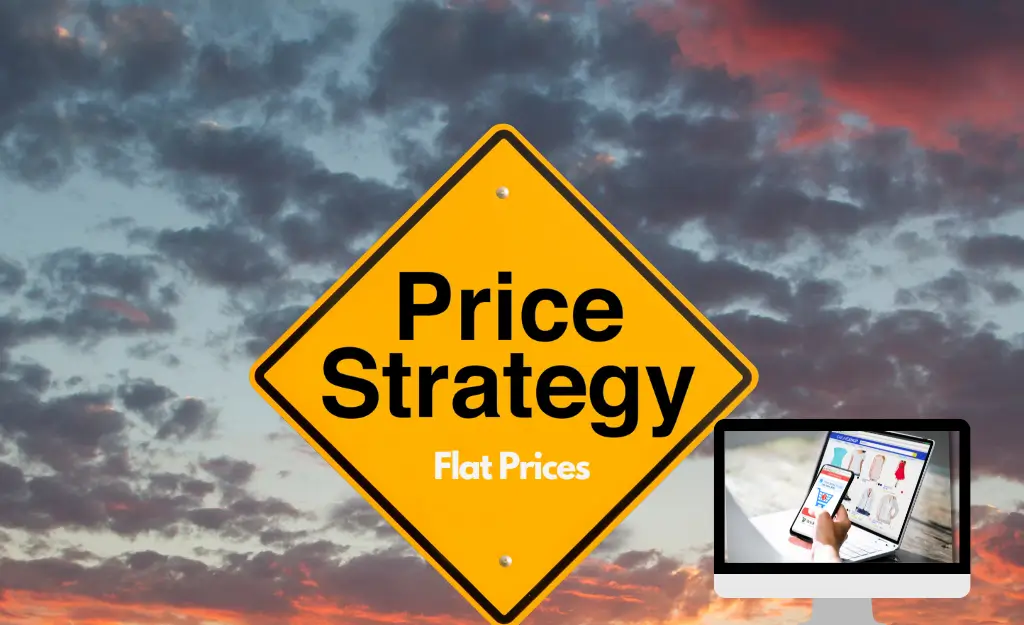Say you’re looking to boost e-commerce sales. Now, let’s discuss some pricing tactics that can really help your business. Getting your pricing right is like finding that secret sauce—it’s got to make sense to your customers and bring in the money.
Cool Pricing Tricks
Here are some popular pricing moves you might consider for your e-commerce shop:
- Flat Pricing
- Just what it sounds like—one flat rate for a product.
- Keep it simple and easy to understand for your buyers.
- Dynamic Pricing
- Prices change based on demand, what the competition’s doing, and other stuff.
- Helps you stay competitive and sell more, faster.
Check out this guide on how to increase e-commerce sales for more ideas.
- Psychological Pricing
- Ever wonder why stuff costs $9.99 instead of a straight $10? It’s a sneaky way to make you feel like you’re getting a bargain.
- Plays with your mind to tip you over into buying.
- Penetration Pricing
- Start low to grab a big chunk of the market quickly.
- Awesome for launching new products and getting noticed.
- Premium Pricing
- High prices to make your product seem fancy and top-shelf.
- Works well if you’re selling luxury or high-end goods.
How Pricing Messes with Consumer Minds
Pricing isn’t just numbers—it’s a magic trick that makes buyers act in certain ways. Want to know how?
- Price Sensitivity
- Shoppers love a good deal. Slashing prices or creating urgency with potential price hikes can boost sales big time.
- Sales Volume
- Drop those prices and watch the sales pour in. Jack them up, and you might see fewer takers.
- Mind Games
- Use psychological pricing to make offers irresistible. It’s all about making buyers feel like they’re winning.
- Perceived Quality
- Higher prices often scream “Better Quality!” to customers.
- Premium prices can make your brand look like a market leader.
Here’s a quick look at how different pricing strategies can play out:
| Pricing Strategy | Sales Volume Impact | Consumer Vibes |
|---|---|---|
| Flat Pricing | Steady and reliable | Clear and simple |
| Dynamic Pricing | Boosts profit | Flexible and savvy |
| Psychological Pricing | More sales due to “deals” | Feels like a win |
| Penetration Pricing | Fast market grab | Budget-friendly |
| Premium Pricing | Fewer sales, more $$$ | Stylish and exclusive |
Want to know more about these tactics and make your first sale? Read our guide on how to make your first e-commerce sales.
Dynamic Pricing in E-commerce
Dynamic pricing is all about tweaking product prices on the fly based on real-time happenings in the market. It’s like having a smart strategy that changes with the tides, giving you a big say in how you price your items to get the most bang for your buck.
Why Should You Care?
Why get on board with dynamic pricing? Here’s the inside:
- Make More Money: Prices shift to match what people are willing to pay right now.
- Get a Leg Up: Stay ahead of rivals by keeping your prices in line with (or better than) theirs.
- Cut Costs: Let machines handle the number crunching, cutting down on human error and hassle.
Big players like Amazon, Best Buy, and Walmart are all about dynamic pricing. They change prices so often, but it works for them. They show minor hiccups in the price-setting algorithms that won’t ruin their profits.
How to Pull It Off
Want to start using dynamic pricing? Here’s the 4-step plan:
- Gather Data: Track what your customers are up to, what others are charging, and what’s hot in the market.
- Build Smart Algorithms: Create algorithms that can crunch all that data.
- Adjust Prices: Use what you learn to tweak your prices in real-time.
- Keep an Eye on Things: Always check how well it’s working and tweak as needed.
Using dynamic pricing doesn’t mean offering massive discounts. You need to strike a balance so that people still think your brand is worth the money.
Try using it during special sales or seasonal promos without cheapening your brand.
Things to Watch Out For:
- How Customers Feel: Know how price changes might tick people off or turn them on.
- Tech and Expenses: Ensure you have the tech to handle all the data and price changes.
- What Others Are Doing: Keep tabs on rivals to stay in the game.
By tapping into dynamic pricing, you can seriously boost your e-commerce business. However, Introducing dynamic pricing can give your store the boost it needs to keep up with and stand out in today’s fast-paced marketplace.
